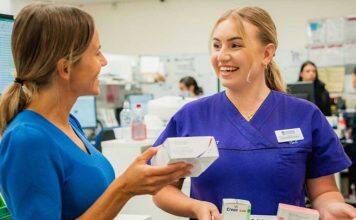Tourism Minister Stuart Nash says planning is underway for a new-look tourism sector post the COVID-19 vaccination programme and when international borders re-open.
Mr Nash has set out his tourism priorities in a speech at the University of Otago Tourism Policy School in Queenstown this morning.
Mr Nash says he is deeply concerned about the situation unfolding in communities like Queenstown, the West Coast, Fiordland, MacKenzie District and Kaikoura that are so reliant on international tourism. He says these areas have taken the greatest hit of a more than 50 per cent reduction in income in their local economies.
“The $400 million Tourism Recovery Package in 2020 was an emergency intervention. Further, structural support will be needed in 2021, before we make changes to prepare for a new landscape in 2022 and beyond,” Mr Nash says.
“The 2020 package, and wider tourism support like $1.8 billion in wage subsidies, $300 million in interest-free loans, and Government-funded vouchers for free business advice or training, have helped tourism operators adapt to domestic markets or look for alternatives.
“I have been upfront that mass-scale international tourism is unlikely before 2022, but we are working hard to open a trans-Tasman bubble in 2021. We are on-track to vaccinate the majority of Kiwis against COVID-19 by the end of this year.
“Further support for tourism in 2021 requires a more structural approach for those who need it most. I am considering potential next steps till borders re-open, such as making it easier to hibernate firms and to start up again; help to diversify regional economies over-reliant on international tourism; and deployment of tourism workers to other sectors.
“The long-term picture for tourism once borders reopen requires more fundamental change. Consistent advice from within the sector, from small communities, and from external agencies like the Parliamentary Commissioner for the Environment demonstrate we cannot go back to the tourism model that existed prior to COVID-19.
“Research by Tourism Industry Aotearoa and Tourism NZ shows a strong sentiment that even within tourism hotspots like Queenstown, as many as 79 per cent of residents felt there was too much pressure from international visitors.
“In essence, tourism was beginning to lose its social licence to operate, and we were running the very real risk of not being able to deliver on our global value proposition behind ‘Brand NZ’.
“We have a responsibility to take an intergenerational view of the role of tourism. I am looking to change the rules around freedom camping, which isn’t free at all for taxpayers or ratepayers who have to pick up the tab.
“I want to take another look at pricing strategies across public assets like national parks, so that the heavy pressure of international visitors is more financially sustainable. There is scope for a fresh look at existing levies like the International Visitor Levy to help ensure the true cost of tourism is priced into the international visitor experience. We undervalue what we have in this country.
“I also want the sector to step up and be part of improvements for the better. This could involve an Industry Transformation Plan where tourism operators join Government agencies, workers’ groups, and iwi to improve the sustainability of the sector.
“I remain committed to my four key principles for transforming the tourism sector: Brand New Zealand must be protected; we cannot return to business as usual; the full cost of tourism must be priced into the visitor experience; and the Government intends to work in partnership with the sector to achieve change.”
Mr Nash concluded his speech by confirming that Cabinet is meeting on Monday to consider a paper on introducing a trans-Tasman travel bubble.






































